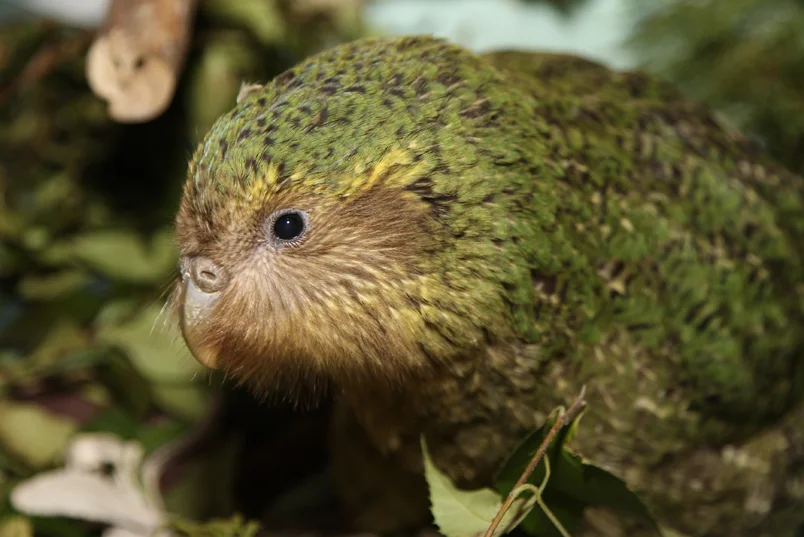Cover image: “Kakapo chick” by Dianne Mason, Department of Conservation is licensed under CC BY 2.0.
New Zealand only has about 250 bird species that are observed in the country annually. Although this is a nominal number of birds, many of the avifauna native to this island are utterly unique. Indeed, New Zealand is a haven for birds that cannot fly, with more than a dozen flightless bird species. Those interested in knowing more about flightless New Zealand bird species have come to the right place! I’ll be going in-depth about a variety of flightless birds of New Zealand, so read on to learn more!
Table of Contents
11 Flightless New Zealand Bird Species
Southern Brown Kiwi
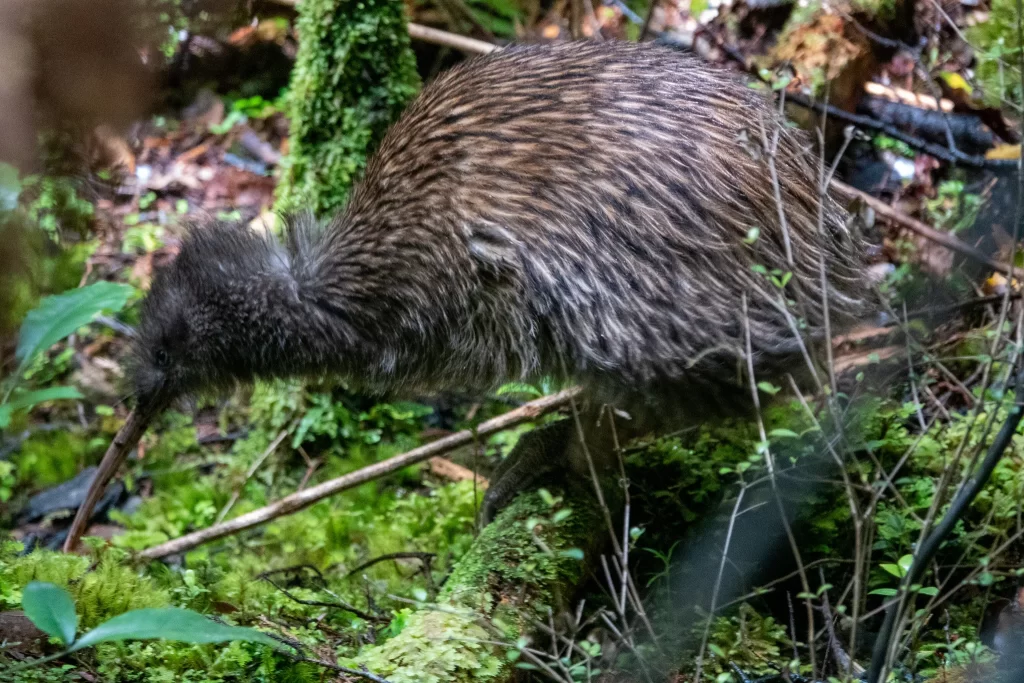
Image attribution: “Southern Brown Kiwi | Ulva Island | NZ|2019-12-14|11-13-34” by Bettina Arrigoni is licensed under CC BY 2.0.
Description
Southern Brown Kiwis measure anywhere between 50 to 65 cm (19.7 – 25.5 inches) in length. Like all kiwis, this flightless bird in New Zealand has a long bill that is slightly decurved at the end. Moreover, they’ve got short legs with three toes. Southern Brown Kiwis vary in colour from greyish to brown-red.
Habitat and Range
This flightless New Zealand bird species is rather adaptable in its habitat usage, being found in forests, grasslands, and farmland. Here, they use their incredible sense of smell to find invertebrates.
Southern Brown Kiwis are divided into two subspecies, with one being found exclusively on Stewart Island and the other confined to the national parks of southwestern New Zealand (Fiordland National Park and Mount Aspiring National Park).
Status
The two subspecies of this flightless New Zealand bird species face different realities in terms of their population trends. The Stewart Island population is stable, with around 20,000 individuals. However, the South Island population has about 7,000 birds and is declining. The cause of their decline is largely driven by predation from invasive species.
North Island Brown Kiwi
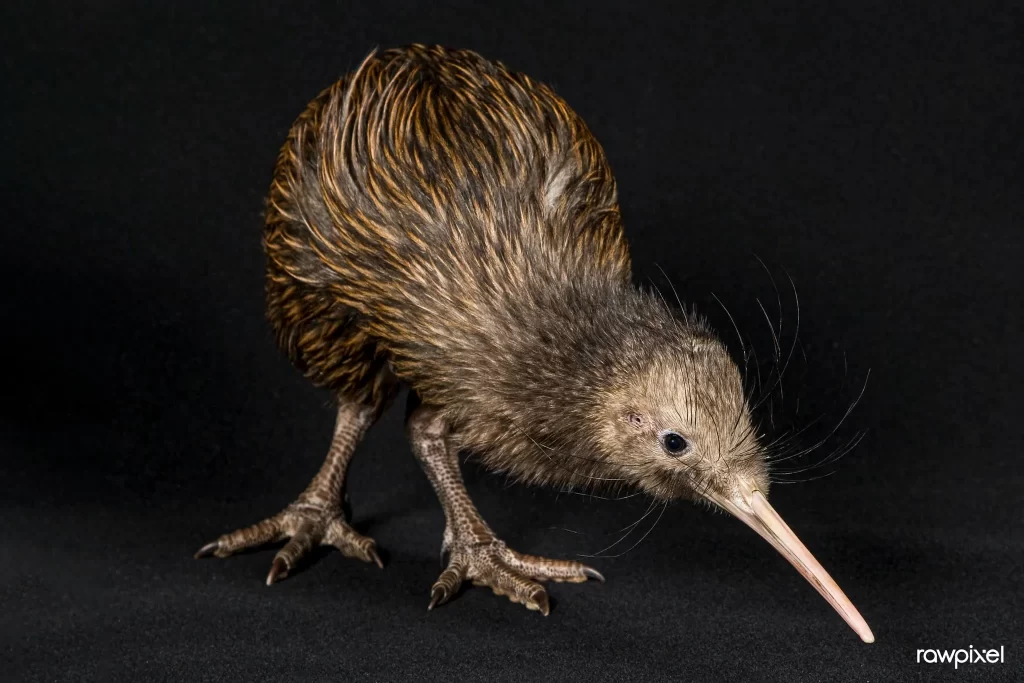
Image attribution: “Brown Kiwi (2010) by Smithsonian Institution. Original from Smithsonian's National Zoo. Digitally enhanced by rawpixel.” by Free Public Domain Illustrations by rawpixel is licensed under CC BY 4.0.
Description
North Island Brown Kiwis are the same size as Southern Brown Kiwis, but they differ in that their plumage has more of a reddish colouration. Additionally, they’ve got more apparent dark streaking on their plumage.
Habitat and Range
North Island Brown Kiwis are found in similar habitats to their Southern Brown counterparts. Therefore, look for these birds that can’t fly in forests, farmland, and pastures.
The population of this flightless NZ bird was formerly widespread in the North Island and parts of the South Island. However, invasive predators have taken a toll on their populations and created fragmented pockets of these birds. Now, North Island Brown Kiwis are only found on the North Island and several predator-free islands.
Status
North Island Brown Kiwis have experienced drastic population declines in the last century, losing perhaps 90% of their total numbers. Nonetheless, about 25,000 about thought to still exist today. These flightless birds are very susceptible to predation from invasive species.
Little Spotted Kiwi
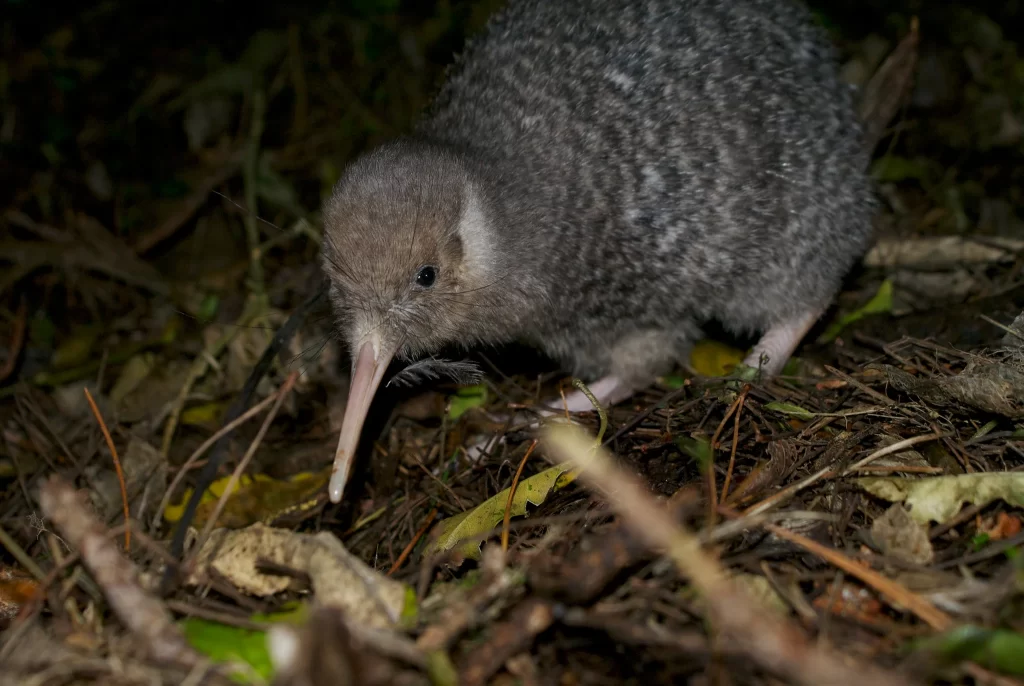
Image attribution: “Little spotted kiwi at Zealandia” by Kimberley Collins is licensed under CC BY 2.0.
Description
Little Spotted Kiwis are the smallest kiwi bird species, measuring 35 – 45 cm (13.75 – 17.75 inches). Similar to other kiwis, these flightless New Zealand birds have rounded bodies with no apparent wings. Plumage for this species is a grey-brown colour with dark barring.
Habitat and Range
Little Spotted Kiwis are primarily found in mature forests that have healthy understories. They may also occur along forest edges, as situating themselves in these locations allows this flightless New Zealand bird is forage in open areas adjacent to the forest at night.
These flightless birds of New Zealand were once common throughout the North and South Islands. Alas, they have vanished from mainland New Zealand following the introduction of mammals by humans.
Now, they can be found at a single location on mainland New Zealand: Zealandia Te Mara a Tane – the world’s first fenced-in wildlife sanctuary. Moreover, Little Spotted Kiwis have been introduced to several predator-free islands: Kapiti, Long Island, Tiritiri Matangi, Red Mercury, and Hen.
Status
The last assessment of Little Spotted Kiwi numbers was in 2008. At this time, there were approximately 1,500 birds distributed throughout the remaining viable habitats for these birds that cannot fly. The vast majority of these NZ flightless birds are found on Kapiti Island, with more than 1,200 thought to survive here. The other locations where they’re present sustain small numbers of Little Spotted Kiwis.
Auckland Islands Teal
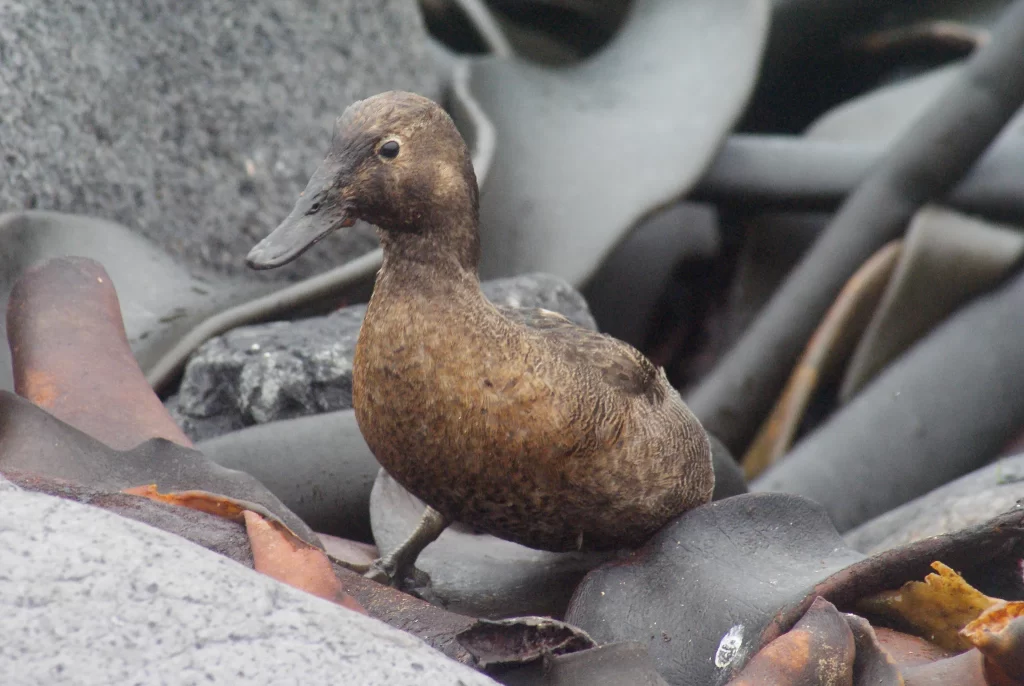
Image attribution: “Auckland Island teal on Enderby Island” by Kimberley Collins is licensed under CC BY 2.0.
Description
Auckland Islands Teal are small waterfowl that measure 36 – 48 cm (14.15 – 19 inches). Although they are ducks, they are one of the only flightless duck species in the world. Males in breeding plumage are distinguished from females because of their greenish heads. Otherwise, both males and females are white eyerings with dark brown bodies.
Habitat and Range
These flightless New Zealand birds are found along coastal areas where they forage and hide in thick vegetation. Auckland Islands Teal may occasionally seek refuge in streams or pools away from the coast.
Auckland Islands Teal have a very small distribution, evolving within the Auckland Islands ecosystem. Today, they are no longer found on Auckland Island, but they can be found on the islands of Disappointment, Enderby, Rose, Ewing, Ocean, Dundas, and Adams.
Status
The exact number of Auckland Islands Teal is up for debate, with estimates ranging between 600 to 2,000 birds. Nonetheless, the population of these birds that can’t fly are seemingly stable. However, they are surely limited by the small range in which their entire population survives.
Campbell Islands Teal
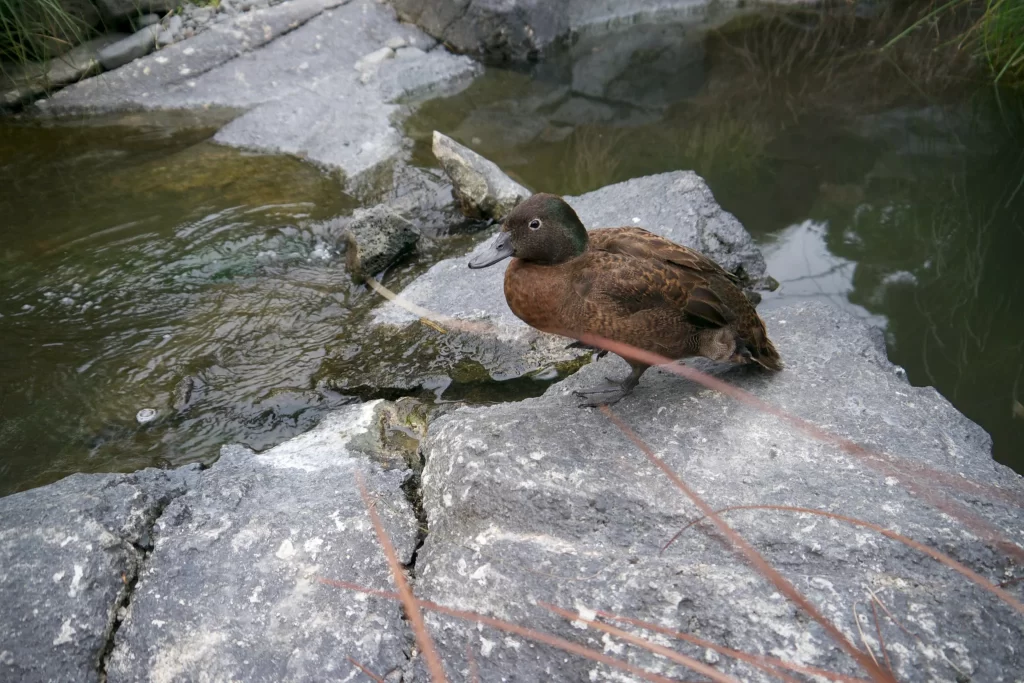
Image attribution: “Campbell Island Teal” by Kimberley Collins is licensed under CC BY 2.0.
Description
The Campbell Islands Teal looks very similar to the Auckland Islands Teal, but they can be differentiated thanks to their separate ranges. Males of this New Zealand flightless bird have a green sheen on their heads, while both sexes have dark brown bodies and white eye rings.
Habitat and Range
Campbell Islands Teal thrive in tall tussock stands where they can feed and remain safe from predators. They may also be found resting on beaches or swimming in creeks.
Dent Island off the west coast of Campbell Island is the stronghold for these types of flightless birds. However, they have been reintroduced to Campbell Island and introduced to Codfish Island.
Status
Campbell Islands Teal have a very fragile population, with only a few hundred birds existing. Indeed, studies have estimated that about 200 adults exist today. Fortunately, the population on Campbell Island seems to be growing, while the population on Dent Island seems to be stable.
Weka
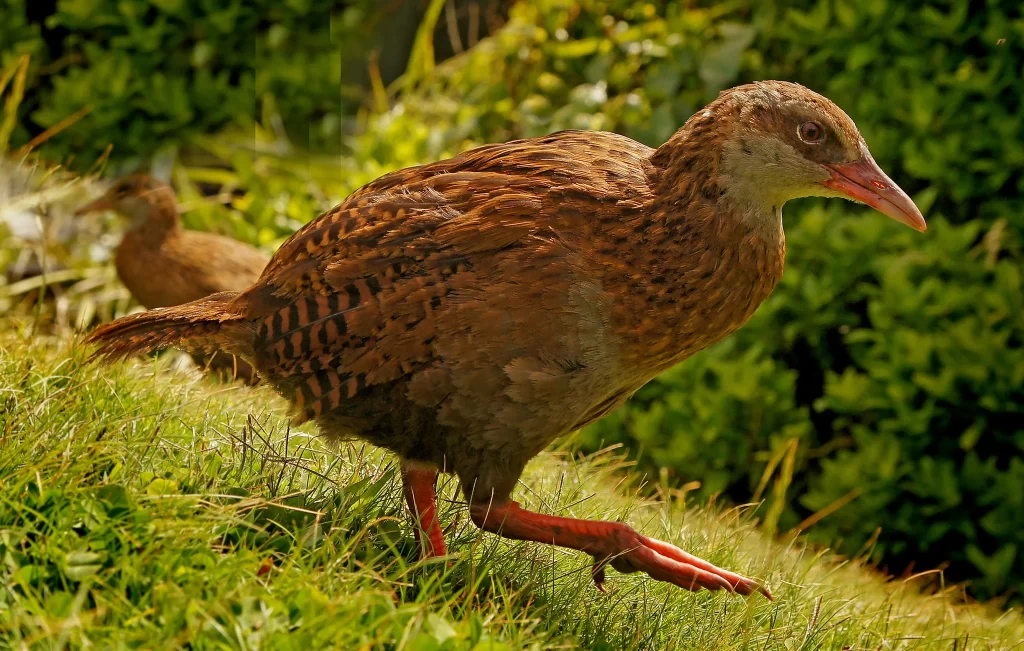
Description
The Weka is a massive rail that measures between 50 – 60 cm (19.5 – 23.5 inches). There are subtle differences in size and plumage between males and females, however, know that both sexes are brown overall with some grey spots among their plumage. These flightless birds of New Zealand have powerful-looking bills that are used to subdue a variety of prey items.
Habitat and Range
Weka are far more adaptable than most of the other flightless birds in New Zealand. Indeed, they are often in forests, agricultural landscapes, beaches, marshes, and urban environments.
This flightless NZ bird was once distributed throughout the North and South Islands, but now it only exists in these locations in fragmented areas. They naturally occur on some of New Zealand’s many islands, but they’ve been introduced to many others.
Status
Weka have–so far–fared better than other birds that can’t fly in New Zealand. However, their populations have still undergone massive declines due to habitat loss and invasive predators. Today, there are more than 100,000 Wekas, but they continue to decline and become fragmented in many areas.
South Island Takahe
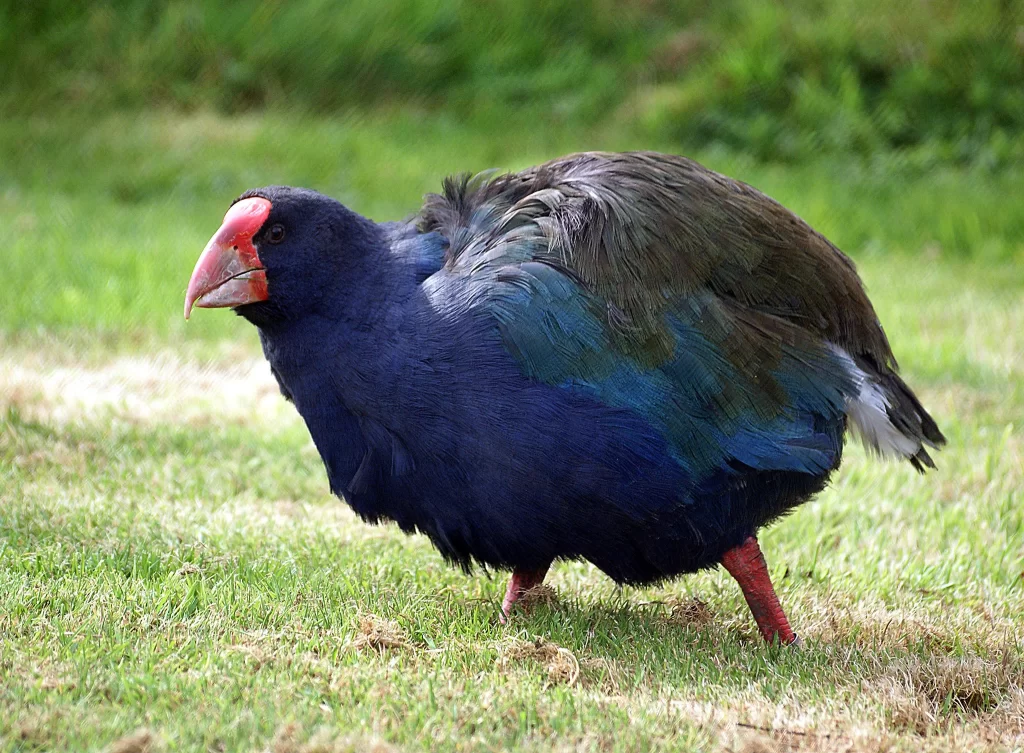
Description
The South Island Takahe is slightly larger than Wekas, making it the largest bird in the rail family worldwide. Indeed, they measure 63 cm (24.8 inches), with males being slightly larger than females. These New Zealand flightless birds are colourful, with purple undersides and heads. Moreover, they’ve got green back and red bills.
Habitat and Range
South Island Takahes are found in high-elevation grasslands, forests, and marshes. This flightless New Zealand bird thrives in areas that receive substantial amounts of rain and snow, and they readily forage in areas with tall grasses so they can remain concealed while foraging.
The only remaining places where South Island Takahes naturally occur are the Murchison and Stuart Mountains in Fiordland. Here, this flightless bird in New Zealand persists, and it has also been introduced to several predator-free islands off North Island.
Status
The South Island Takahe was once considered to be an extinct flightless bird from New Zealand. Fortunately, it was rediscovered in 1948. Today, there are only about 250 individuals that remain in the wild.
Populations have been greatly reduced by invasive species such as red deer, as they degrade the habitat for this species. Moreover, invasive predators like stoats have disastrous consequences on South Island Takahes. Stoat removal along with captive breeding programs have lately led to a slight increase in population for this species.
Yellow-eyed Penguin
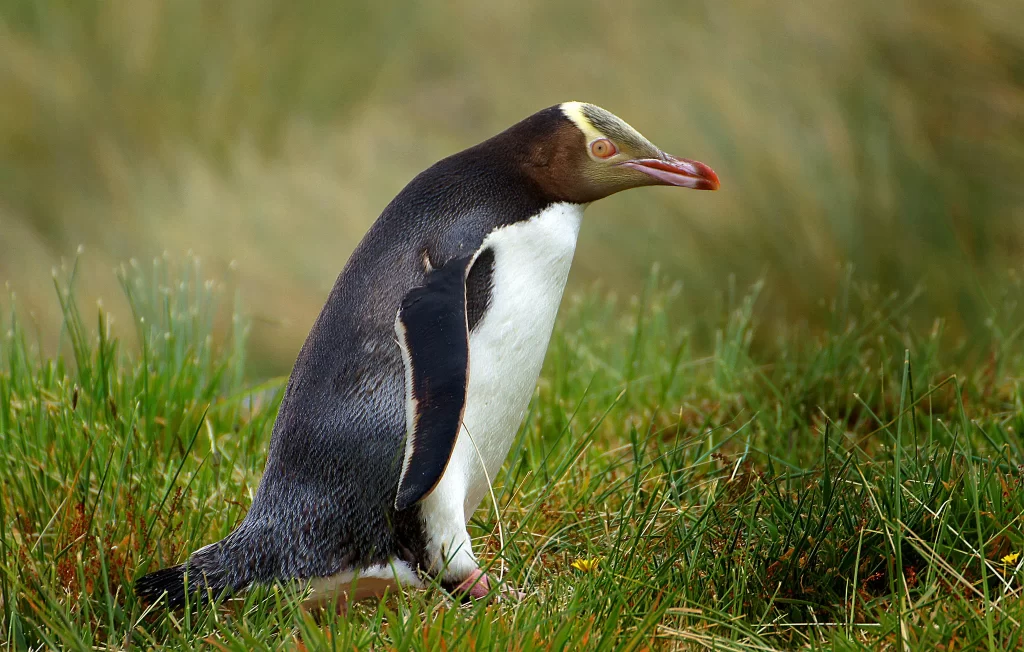
Description
Yellow-eyed Penguins measure 66 – 76 centimetres (26 – 30 inches) and are sexually monomorphic. Breeding adults have yellow-green eyes, yellow facial feathers, and a pale yellow stripe through the eye. Moreover, they have gorgeous pink and red bills. These New Zealand flightless bird species have white undersides and dark backs.
Habitat and Range
Yellow-eyed Penguin pairs breed near coastal areas where they build nests on slopes or cliffs. Their breeding habitat has thick stands of grasses, allowing them to seek refuge from predators.
These penguins breed on the southeastern portion of South Island. Moreover, this flightless New Zealand bird breeds on Stewart Island, Campbell Island, Codfish Island, and Auckland Island.
Status
Yellow-eyed Penguins are an endangered species that has experienced major population declines in the last half-century. Today, only a few thousand birds remain. Many factors have led to declines in Yellow-eyed Penguin populations. Some of the most detrimental losses can be attributed to predation by invasive species, habitat loss, climate change, and avian diseases.
Little Penguin
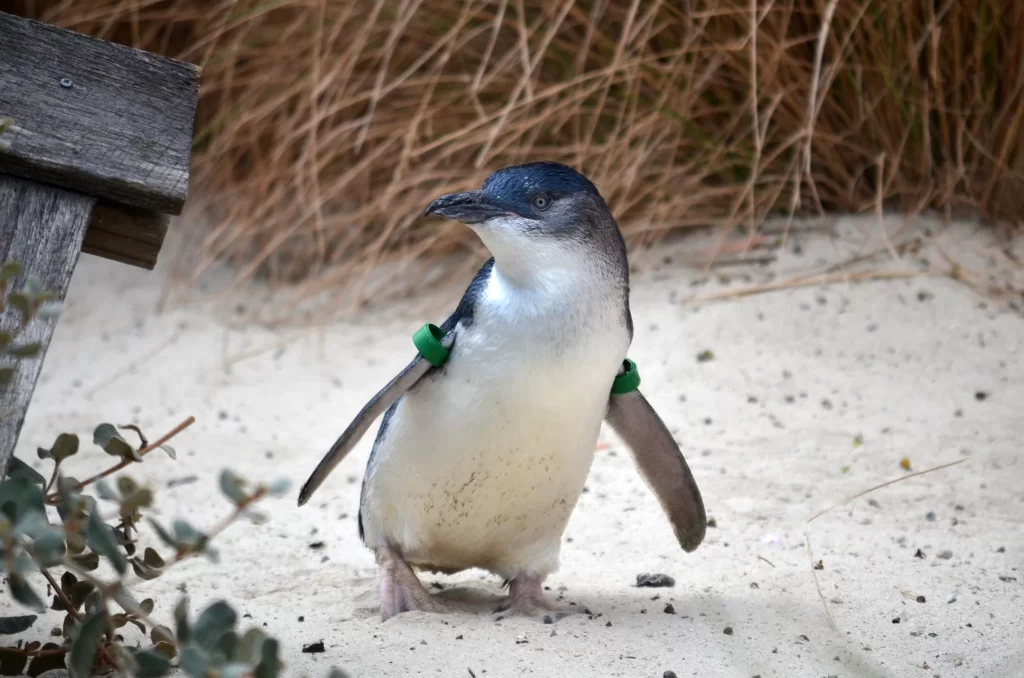
Image attribution: “Little Penguin” by Chris Fithall is licensed under CC BY 2.0.
Description
Little Penguins are aptly named, being the smallest penguins in the world. Yes, this flightless bird from New Zealand measures 40 to 45 cm (15.75 to 17.75 inches). They are sexually monomorphic, with males and females both having attractive bluish-coloured backs and faces.
Habitat and Range
Like all penguins, Little Penguins forage at sea during all times of the year save for the breeding season. During the breeding season, these friendly-looking penguins seek out a nesting location on small islands. Here, this flightless New Zealand bird makes their nest in a burrow, natural hollow, or artificial nesting enclosure.
Unlike the other birds on this list, Little Penguins are not confined to New Zealand, as they also breed along the southern coast of Australia on renowned places like Phillip Island. The primary breeding sites in New Zealand include Green Island, Oamaru, Otago Peninsula, and Taieri Island.
Status
Little Penguins are faring better than any other bird on this list, with a global population of probably over 1 million. However, this New Zealand flightless bird is declining in most of its range. They are far less numerous in New Zealand compared to Australia. Little Penguins are threatened by invasive predators, habitat degradation, and human disturbance among other things.
Fiordland Penguin
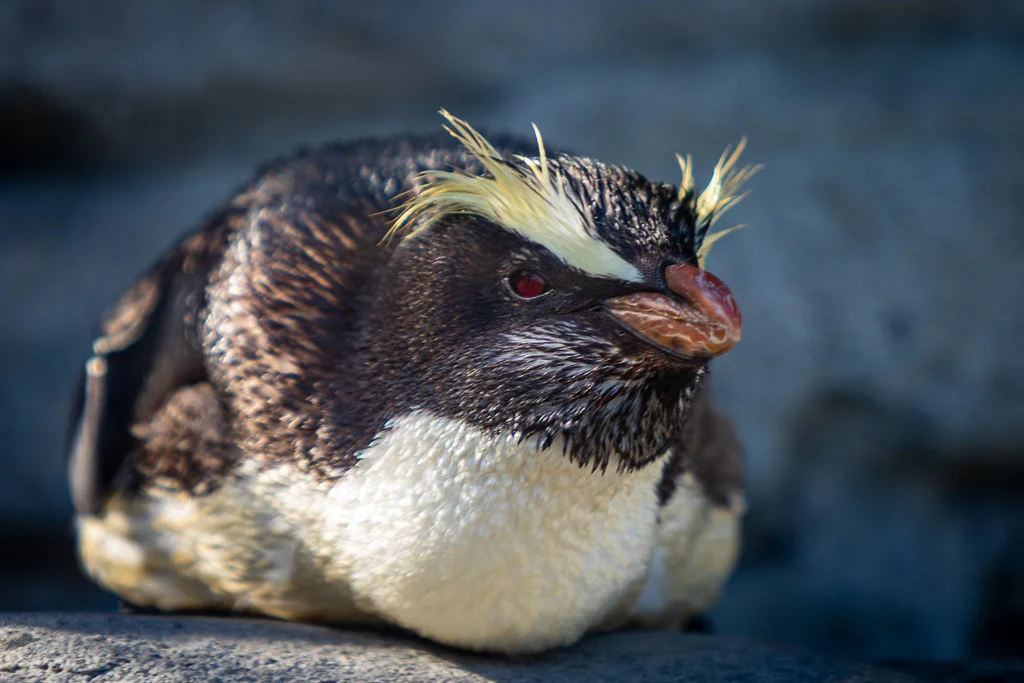
Image attribution: “220A9223” by Andrew Arch is licensed under CC BY 2.0.
Description
Fiordland Penguins are medium-sized flightless New Zealand birds. They’ve got thick bills, white undersides, and dark faces and backs. Moreover, Fiordland Penguins have yellow stripes that run from the base of their bills to the backs of their heads.
Habitat and Range
Look for these flightless birds on islands with coastal rainforests. Here, they will come ashore during the breeding season to wander into the forests to select a nesting location. Nests are placed under vegetation or in burrows.
Mating of Fiordland Penguins takes place along South Island and surrounding islands.
Status
The population of this penguin has declined precipitously in the century. Less than 10,000 are thought to remain today, with the threats of mortality from introduced predators being a driving force in the decline of these New Zealand flightless birds. Interestingly, the Weka is among the biggest threats to Fiordland Penguins, as birds that have been introduced to the islands where Fiordland Penguins breed eat eggs and chicks.
Kakapo
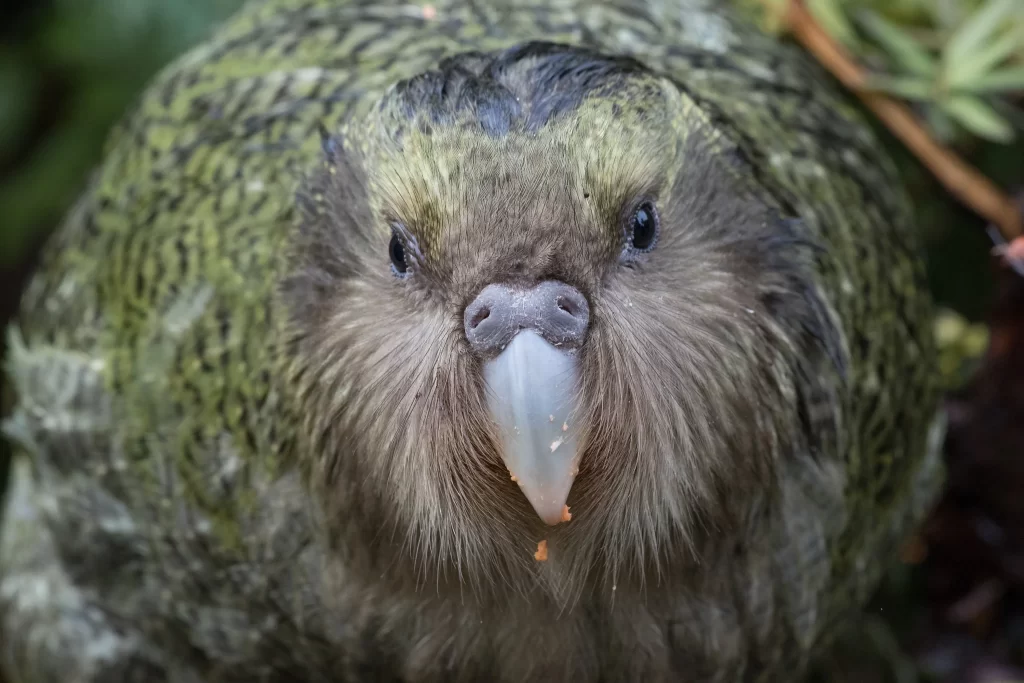
Image attribution: “Kākāpō” by Kimberley Collins is licensed under CC BY 2.0.
Description
Kakapos are large, flightless parrots that measure 64 cm (25.2 inches). Sexes are monomorphic, being green overall with black and brown patterning throughout their plumage.
Habitat and Range
The cryptic colouration of the Kakapo allows this New Zealand flightless bird to blend in wonderfully with its mossy forest habitats as it rests during the day before emerging to feed at night. In addition to living in forests, Kakapos survive in subalpine areas where they may live near open locations in which they can forage at night.
Kakapos formerly inhabited both the North and South Islands in addition to Stewart Island. Alas, they have been extirpated from all of these locations. Now, they survive on islands free of introduced predators. Chalky Island, Codfish Island, Little Barrier Island, and Anchor Island all support Kakapo populations.
Status
Miraculously, the Kakapo is still alive, as this species was essentially helpless to defend against the millions of invasive predators that have colonized its former habitats. Stoats, cats, rats, and dogs led to their demise on the mainland, while the absence of stoats from Stewart Island is probably the only reason that this bird is still alive today. The last Kakapos from Stewart Island were translocated to islands free of predators, and conservationists now meticulously manage the population that now exceeds 200 individuals.

